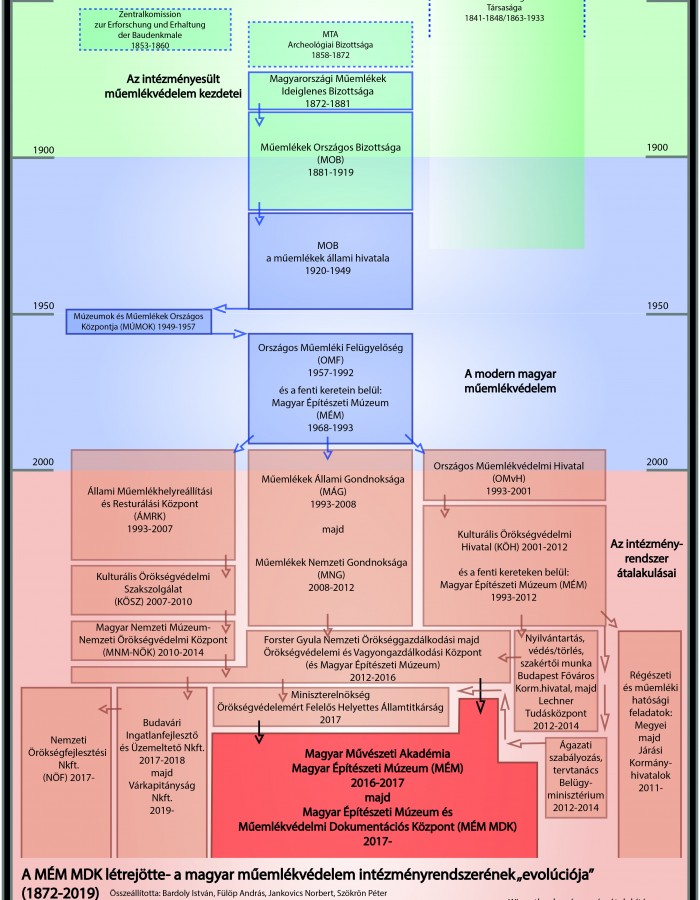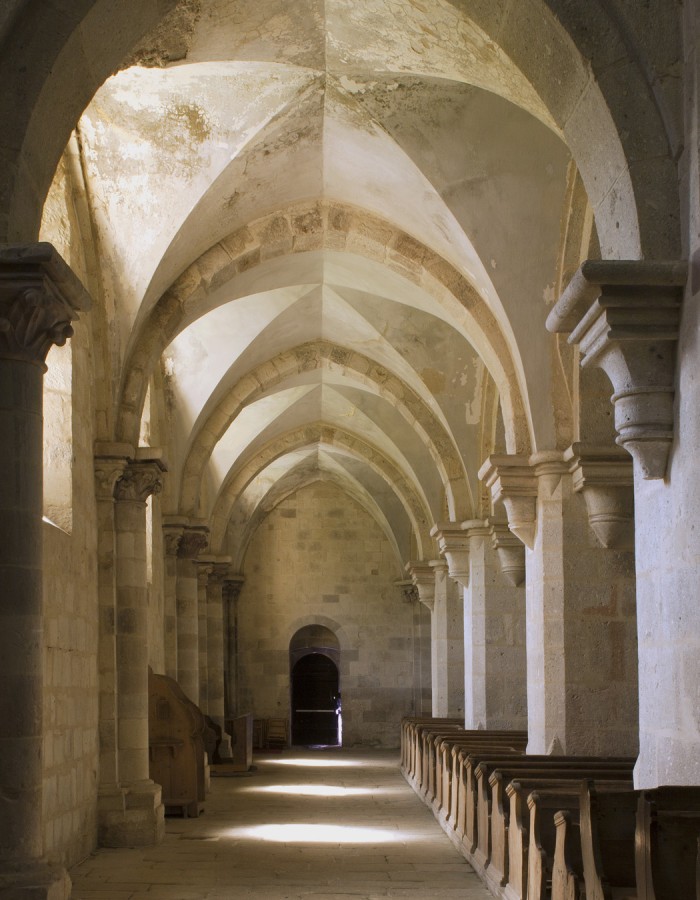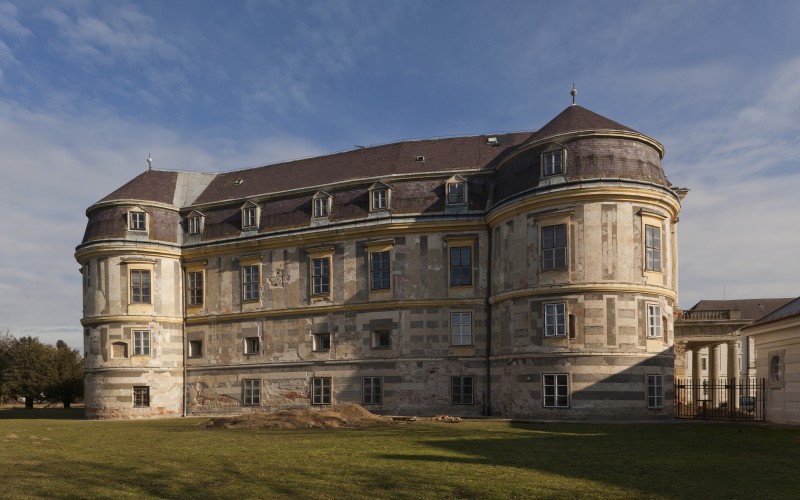Hungarian Museum of Architecture and Monument Protection Documentation Centre
(MÉM MDK)
Our institution is divided into four major specialties. The Museum Department and that of Monumental Repositories (within which there is a separate repository for plans, books, photos, and documents) have been conserving architectural plans, photos, books, official documents, manuscrpits since the nineteenth century. Their job is supported by the Department of Digitisation, while that of Research deals with preparing monumental topographies. Moreover, they carry out field researches relating to the history of architecture, and other investigations as well, in close connection with monument protection.
Brief History of the Istitution
The first institution established for monument protection was founded in 1872 under the name of Provisional Committee of Monuments, and from 1881 (until 1949) as National Committee of Monuments.
The National Monument Inspectorate started to operate in 1957, then in 1993 it split into three successor institutions (National Monument Protection Office, State – later on National – Board of Trustees of Monuments, State Monument Reconstruction and Restoration Centre).
In 2001 the Cultural Heritage Protection Office was set up, which in 2012 changed to Forster Centre (until 2016).
In the following years the repositories were passed over to the deputy under-secretariat of the Cabinet Office of the Prime Minister charged with heritage protection, while the museum’s sector was joined to the Hungarian Academy of Arts.
It is the Department of Research which has changed hands most frequently: from 2007 the Special Service for Cultural Heritage Protection, from 2010 the Hungarian National Museum-National Heritage Protection Centre, from 2015 the Forster Centre, from 2016 the Cabinet Office of the Prime Minister, and from the end of 2017 the Hungarian Museum of Architecture and Monument Protection Documentation Centre – an institution of the Hungarian Academy of Arts – has been making a home for this specialty as well.
The Departments
Department of Architecture
The Hungarian Museum of Architecture was formed in 1968 on the initiative of professors Anna Zádor and Jenő Rados, within the framework of the one-time National Monumental Inspectorate. In 2017 the Hungarian Academy of Arts took over the institution as maintainer, which from November of the same year works as part of the Hungarian Museum of Architecture and Monument Protection Documentation Centre.
The museum got an operating permit in 1975 classified as a ’special museum with a nationwide sphere of collecting’. Its – already fifty-year-old – collection has been enlarged for decades through buying and donating. The museum’s sphere of collecting includes objects in connection with architecture and the history of architecture, that is, plans, models, paintings, photographs, moving pictures and sound-materials; moreover, written documents (personal papers, letters, records), special books and periodicals, ornamental prints, drawing tools, building accessories and other artefacts – mainly from the territory of Hungary or with a Hungarian relation. The museum was founded only in the second half of the twentieth century, for this reason most pieces of its collection date back to not earlier than the second half of the nineteenth century, since at the time of the foundation of the Museum of Architecture the heritage of the remarkable architects of the eighteenth and nineteenth centuries already belonged to other public repositories. Thus the material of the museum is considerable mostly because of the bequest of those architects, interior designers, and architectural photographers who were active not only between the two world wars, but also in the years after 1945.
Among the significant pieces of the collection, there are, for instance, the works of Alajos Hauszmann, Miklós Ybl, Ödön Lechner, Miksa Róth, Ernő Foerk, Gyula Sándy, Dénes Györgyi, Gyula Kaesz, Lajos Kozma, Farkas Molnár, József Fischer, Máté Major, Virgil Bierbauer (Borbíró), Gyula Rimanóczy, Károly Dávid Jr., Lajos Gádoros and Margit Pázmándi. The material of the museum is noteworthy also from the point of view of architectural photography, as the photo gallery contains – among others – pictures of Mór Erdélyi, Károly Divald, József Pécsi, Olga Máté, Ferenc Haár, Ernő Bánó, Zoltán Seidner and Tivadar Kozelka, too.
Despite that the museum never had a separate exhibition space, it arranged several important exhibitions and issued catalogues and publications of source value. The Hungarian Museum of Architecture is a member of the International Confederation of Architectural Museums (ICAM) and of the Docomomo International.
Colleagues:
Ritoók Pál
ritook. pal@mma-mem.hu
Baldavári Eszter
baldavari.eszter@mma-mem.hu
Balogh Viktória
balogh.viktoria@mma-mem.hu
Sebestyén Ágnes Anna
sebestyen.agnes@mma-mem.hu
Department of Research and Methodology
One of the main tasks of the Department of Research and Methodology included in current regulation is to contribute to scientific and professional activities referring to cultural heritage protection. Scientific work embraces a larger spectrum of the field of monument protection; however, our researchers can pursue professional activity only in issues to which they have a special permission, mostly in connection with statements of significance and (historical) building investigation.
From 2015, the beginning of the National Manor-House Programme and the National Castle Programme, both beneficiaries of a state support, the colleagues of this department have taken part in the project as researchers of the buildings with a special permission. They control field works, prepare detailed documentations about the history of buildings and their excavation, and offer proposals as for how to restore and save built items having a monumental value. The background for the programme is granted by the manager National Heritage Protection Development NGO Ltd., while the specialists come from our institution. They have already prepared a documentation of building history, then have controlled historical building research – among others – in:
Dég, in the Festetics Manor-House;
Füzérradvány, in the Károlyi Manor-House;
Körmend, in the Batthyány Manor-House;
Nádasdladány, in the Nádasdy Manor-House;
Geszt, in the Tisza Manor-House;
Tata, in the building complex of the Eszterházy Manor-House;
and finally, in the castles of Várgesztes, Doba-Somló, Nagyvázsony, Sümeg.
This Department also carries out scientific basic researches with a topographical point of view in different topics, or participates in similar researches as partners. For example, the built heritage of Tállya is being investigated within the framework of a great topography called ’Topographical researches in Kőszeg and Tokaj-Hegyalja’, which means not only gathering data in the field and in specialized literature, but also exploring full comprehensively historical background research and all the sources found in the letter, document and plan repositories.
During the common project of the predecessor institution of MÉM MDK and the Department of Art History of Pázmány Péter Catholic University the overall scientific elaboration of Baroque wall paintings in Hungary has been carried out. The programme is connected to the work of the international research team called Baroque Ceiling Painting in Central Europe.
From the beginning of the 1980s we started to collect material for the topography of Veszprém County, and within it for the town of Veszprém, which during the 1990s got stuck. Nowadays in our department we are again working on this project and this time we plan to publish it, too.
This sector has a special function as well which is to prepare monumental geodesical surveys. It differs from general surveys in the manner and use of approach, since – thanks to its being elaborate – it constitutes a basis for the work of all the specialists, like architects, archeologists, art historians, restorers, etc. regarding monument reconstruction.
Colleagues:
Koppány András
koppany.andras@mma-mem.hu
Balázsik Tamás
balazsik.tamas@mma-mem.hu
Bartos György József
bartos.gyorgy@mma-mem.hu
Borossay Katalin
borossay.katalin@mma-mem.hu
Dr. Csejdy Júlia
csejdy.julia@mma-mem.hu
Deákné Oszkó Ágnes Ivett
deakne.oszko.agnes@mma-mem.hu
Fenesi Lívia
fenesi.livia@mma-mem.hu
Fülöp András
fulop.andras@mma-mem.hu
Galamb Zsuzsanna
galamb.zsuzsanna@mma-mem.hu
Gaylhoffer-Kovács Gábor
gaylhoffer.gabor@mma-mem.hu
Héczey Márkó Ágnes
heczey-marko.agnes@mma-mem.hu
Jankovics Norbert
jankovics.norbert@mma-mem.hu
Dr. Nagy Veronika
nagy.veronika@mma-mem.hu
Simon Zoltán Sándor
simon.zoltan.sandor@mma-mem.hu
Szökrön Péter
szokron.peter@mma-mem.hu
Thury László
thury.laszlo@mma-mem.hu
Department of Monument Documentation
From 1872, the foundation of the National Committee of Monuments, the Library has been a continuously growing reference library – in part, public – for monument protection, art history and the history of architecture. Since it is the one and only special reference library in Hungary for information about built heritage and the protection of monumental moveables, this is the main direction of its holdings development. Besides, it collects all the writings from the literature of the sciences theoretically in connection with heritage and monument protection that support researches carried out by our colleagues. At present, its substance contains 42 000 volumes of books, 6 000 volumes of periodicals, and 200 CD-ROMs.
The Plan Repository is one of Hungary’s fundamental collections about the history of architecture. Its primary task is to collect and save textual and pictorial sources (like scientific, restorational, reconstructional and urbanist layouts, designs, maps, etc.) documenting the memories of built heritage. The core material of the collection consists of the plans drawn at the time of the National Committee of Monuments. Among the authors, especially Robert Onderka, Imre Henszlmann, Ferenc Schulcz, Viktor Myskovszky, Imre Steindl, Frigyes Schulek, István Möller and Ottó Sztehlo are worth mentioning. These documents, which record important data regarding the monuments of the so-called historical Hungary, provide information also about the institutional history of monument protection, the office’s relations with schools and higher education (Magyar Királyi József Műegyetem ’Hungarian Royal József Technical University’, Magyar Királyi Állami Felső Építő Ipariskola ’Hungarian Royal State Upper Technical Institute of Construction’) and the methodology of contemporary scientific research.
The collection went on augmenting in the 20th century, too. From 1957 its growth was mainly promoted by the documenting and planning activities of the National Monumental Inspectorate, up to 2011. Moreover, the institution enriched its substance by way of buying or acquisition of bequests (e.g. Jenő Rados’s, Anikó Gazda’s) and other documentational units.
The Scientific Archives stores all the official registered files created during the work of Hungarian monument protection between 1872-1992 (Official Files), and also the scientific collection of a mixed content which – because of its character – does not belong to the sphere of collecting of any of the repositories (Lymbus).
You can find here the files of the following institutions:
Magyarországi Műemlékek Ideiglenes Bizottsága ’Provisional Committee of Monuments in Hungary’ (1872-1881);
Műemlékek Országos Bizottsága ’National Committee of Monuments’ (1881-1949);
Múzeumok és Műemlékek Országos Központja (MUMOK) Műemléki Alosztály ’National Centre of Museums and Monuments-Monument Subdivision’; Építészeti Tanács Titkárság Műemléki Csoport ’Secretariat of the Council of Architecture-Monument Section’ (1950-1955);
Országos Építésügyi Hivatal Műemléki Csoport ’National Office of Building Affairs-Monument Section’ (1955);
Várgondnokság ’Castle Maintains’ (i.e. a state company responsible for the maintenance of the royal castle) (1950-1957);
Országos Műemléki Felügyelőség ’National Monument Inspectorate’ (1957-1991);
Országos Műemlékvédelmi Hivatal ’National Monument Protection Office’ (1991-1992).
At present, registers are available regarding only the material produced between 1872-1977.
The general spread of photography at the end of the 19th century created the opportunity for the National Committee of Monuments – the predecessor instituion of MÉM MDK – to set up an architectural Photo Repository. The objective way of vision of a photograph has saved the old, original sight of our historical buildings helping thus later generations get to know, conserve and restore them. These almost 130-year-old pictures constitute an irreplaceable source for operative professional work and scientific research in heritage protection.
This collection consists of 250 000 negatives, 87 000 positive photographs, and 14 000 slides, which were taken when reviewing and inventorizing monuments as well as during their conservation and reconstruction. They represent old buildings, townscapes of the so-called historical Hungary on the one hand, and, on the other, the exploring, restoring, inventorizing, examinating work on these monuments carried out by the predecessor institutions of MÉM MDK.
In the repository there are the photographs, negatives of Jenő Rados, Károly Csányi, Anikó Gazda, Miklós Horler and several other architects, art historians, kept as a bequest.
Colleagues:
Bakó Zsuzsanna
bako.zsuzsanna@mma-mem.hu
Kádár Zsófia
kadar.zsofia@mma-mem.hu
Köntzey Mercedes
kontzey.mercedes@mma-mem.hu
Kovács Gergely
kovacs.gergely@mma-mem.hu
Szecskó Ágnes
szecsko.agnes@mma-mem.hu
Department of Digitalisation
In our days any repositories and archives are expected to make their material available also in a digital form. Accordingly, the Department of Digitisation has been accomplishing this task on the basis of a special strategic schedule. The digital cluster thus created provides an easier access for the researchers, and guarantees the protection of archived files, since there is no need to take the digitized documents in hand again and again. The competency of our colleagues and the technical tools at our disposal make it possible to produce professional copies satisfying all demands.
The job of the Department is to participate in the systematic elaboration of the substance in monuments of Hungary, as well as to prepare photo documentations. They pursue applied photographic activities regarding architecture, art objects and archaeology. On the one hand, their photos are published in brochures and exhibitions supported by MÉM MDK; on the other, they enlarge the collection of the Photo Repository. In connection with it, they endeavour to present the significant monument restorations of the last decade and to document the actual state of the dominant pieces of built heritage.
Colleagues:
Bélavári Krisztina
belavari.krisztina@mma-mem.hu
Hack Róbert
hack.robert@mma-mem.hu
Nagy Krisztina
nagy.krisztina@mma-mem.hu








